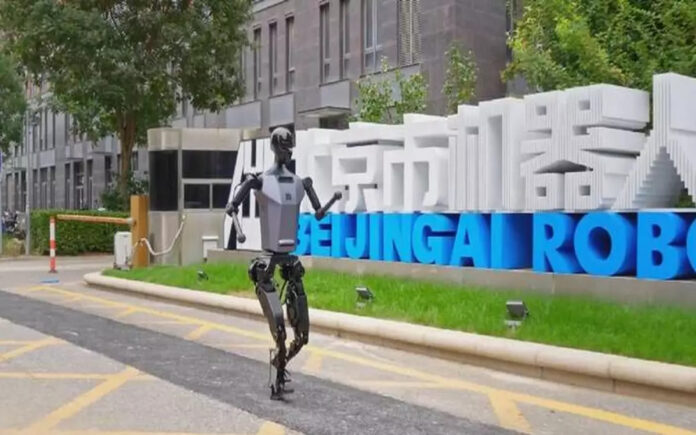Beijing: China has made a landmark move in robotics by open-sourcing “Tiangong”, the world’s first full-sized humanoid robot powered exclusively by electric drive and capable of running. Developed by the National and Local Co-built Embodied AI Robotics Innovation Center in Beijing, Tiangong is now accessible as an open-source platform, aiming to foster innovation and collaboration in the field by enabling secondary development.
According to Global Times, Tiangong features a sophisticated design that allows it to navigate varied terrains—such as stairs, slopes, and sand—demonstrating its adaptability to real-world tasks, including warehouse logistics and security patrols. The open-source release of Tiangong reduces development costs and provides a unified platform that could set new standards in humanoid robotics, marking a leap forward in China’s robotics and AI ambitions.
Tiangong’s Technological Milestone
Tiangong, celebrated as the world’s first fully electric-powered running humanoid robot, is expected to accelerate progress in humanoid robotics and their integration into daily life. By going open-source, the platform invites researchers and developers to participate in advancing embodied robotics, body mechanics, and artificial intelligence. Two versions are currently available—“Tiangong 1.0 LITE” and “Tiangong Pro”—with design documents and software tools. The Innovation Center plans to release additional structural blueprints and system architectures by year’s end.
Tiangong can maintain a steady running speed of 10 km/h, peaking at 12 km/h, and seamlessly handles challenging terrains like stairs, sand, and slopes. Demonstrating its utility in practical scenarios, the robot has already contributed to tasks such as warehouse management and electrical plant security.
Boost to Robotics Industry and Standardization
The open-source approach is expected to promote standardization within the humanoid robotics supply chain, facilitating broader adoption and innovation. Leading institutions, including Peking University and UBTECH, are optimistic that Tiangong’s open platform will foster substantial advancements while minimizing development costs.
Also Read | Zaporozhye on Edge: Russia Strengthens Forces, Ukraine Braces for Major Attack
The Ministry of Industry and Information Technology has recognized humanoid robotics as a critical focus for economic growth and global competitiveness. Tiangong’s release aligns with this strategic vision, reinforcing China’s drive for innovation in this rapidly evolving field.
Also Read | Pentagon Leaker Jack Teixeira Faces 15-Year Prison Term for Security Breach
This development follows the recent launch of “Qinglong,” a general-purpose humanoid robot from the Shanghai-based National Local Joint Humanoid Robot Innovation Center. At 185 cm tall and weighing 80 kg, Qinglong is another testament to China’s growing presence in the robotics landscape.



